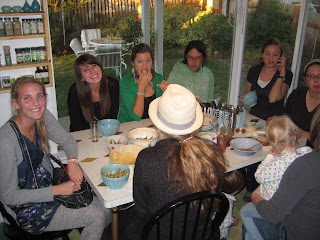
One of my favorite Fall/Holiday treats is roasted chestnuts.

I have only known about them for two or three years-which is funny considering the Christmas song.
**I'll have you know...there is a fungus behind the cultural loss of "chestnuts roasting on an open fire." About a hundred years ago, a beautiful tree called the American Chestnut was common on the East Coast both in forests and suburban areas. The trees bountifully produced free, tasty treats for wildlife and people alike. So long as you could extract the fat nuts from their needle-sharp, spiked hulls. Chestnuts were so common-and free-they became a winter food source for many homeless. Hence, the lyric "chestnuts roasting on an open fire" in reference to signs of winter and Christmas.
It became popular to buy imported chestnuts from Asia, and when the Chinese Chestnut arrived, so did a fungus.
Cryphonectria parasitica, the fungus associated with the Chinese Chestnut-but not harmful to it-began to infect the vulnerable American Chestnut, and with drastic effects :(
It killed mature American Chestnut trees and prevented seedling growth.

A month ago I discovered a European Chestnut, or Sweet Chestnut, (
Castanea sativa) tree right outside Johnson Hall (the building where I work at UW). I hadn't noticed it last year because I didn't use that entrance/exit.
Everyday, on my way to and from work (and for breaks!) I hunt for chestnuts that have fallen from the tree. Their thick, green hulls are so spiky-sharp, but I now have a system of opening them with my feet/shoes. Sometimes the nuts fall right out of their hulls on the tree and are loose in the leaves below.
I get about 20 chestnuts every day.
I am working hard to beat the squirrels to them! They are out there night and day, but I have an advantage over them: shoes and opposable thumbs! ha!
Here is some info on the differences between the edible chestnut (
Castanea sativa) and the inedible horse chestnut (
Aesculus hippocastanum):
 the nut:
the nut:Though the two both have circular scars on the bottom, the edible chestnut has a "tuft" from the stigma and styles of the flower, the inedible horse chestnut is smooth on top.
 the green hull:
the green hull:the green hull of the edible chestnut is densely covered with needle-sharp points, the inedible horse chestnut is loosely covered with sloping points.
 the leaves:
the leaves:The leaves of the two trees are very different, though they look superficially similar. They both have dentate (toothed) margins (edges), but the way the leaf attaches to the stem is very different. The inedible horse chestnut (above photo) has a palmate leaf of 5-7 leaflets. The edible chestnut (below) has single leaves attached alternately to the stem.
 the flowers:
the flowers:The flowers of the edible chestnut are in pendulous groups called catkins (above photo) containing tiny, inconspicuous male flowers and small clusters close to the stem of female flowers that will grow into the chestnuts. The inedible horse chestnut has groups of erect, white, sweet smelling showy flowers.
Aside from that, the edible chestnut is less common while the horse chestnut is a common suburban tree.

































